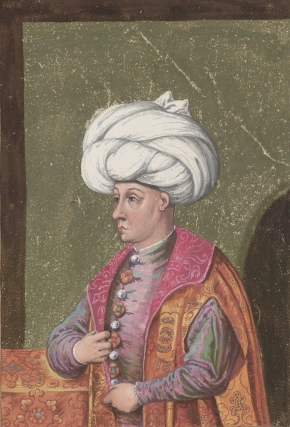|
Bayundur
The Bayandur (, , ), also spelled Bayundur or Bayindir, is an Oghuz Turkic tribe. Originally one of the 7 original tribes that made up the KimekÔÇôKipchak confederation, they later joined the Oghuz Turks. The Bayandur originated from Central Asia. History The Bayandur are known from Arab and Persian sources. The Bayandur was one of the 7 original tribes that made up the Kimek confederation, along with the Imur/Imi, Imak Tatar, Kipchak, Lanikaz and Ajlad. The Kimek tribes originated in the Central Asian steppes, and had migrated to the territory of present-day Kazakhstan. The Bayandur, as part of the Kimek, were mentioned by Gardizi. The Bayandur left the Kimek and joined the Oghuz. After disintegrating, half of the tribe united with the Kipchaks. While part of the Oghuz, they were mentioned by Kashgari. They were described in the Russian annals on 11th-century events while part of the Kipchaks. Aq Qoyunlu The Aq Qoyunlu was referred to as ''Bayanduriyye'' in Iranian and ... [...More Info...] [...Related Items...] OR: [Wikipedia] [Google] [Baidu] |
Tamgha
A tamga or tamgha (from ) was an abstract Seal (emblem), seal or brand used by Eurasian nomads initially as a livestock branding, and by cultures influenced by them. The tamga was used as a livestock branding for a particular tribe, clan or family. They were common among the Eurasian nomads throughout Classical Antiquity and the Middle Ages. As clan and family identifiers, the collection and systematic comparison of tamgas is regarded to provide insights into relations between families, individuals and ethnic groups in the steppe territory. Similar tamga-like symbols were sometimes adopted by sedentary peoples adjacent to the PonticÔÇôCaspian steppe both in Eastern Europe and Central Asia. Branding of livestock was a common practice across most sedentary populations, as far back as the ancient Egyptians. It has been speculated that Turkic tamgas represent one of the sources of the Old Turkic script of the 6thÔÇô10th centuries, but since the mid-20th century, this hypothesis is ... [...More Info...] [...Related Items...] OR: [Wikipedia] [Google] [Baidu] |
Oghuz Turks
The Oghuz Turks ( Middle Turkic: , ) were a western Turkic people who spoke the Oghuz branch of the Turkic language family. In the 8th century, they formed a tribal confederation conventionally named the Oghuz Yabgu State in Central Asia. Today, much of the populations of Turkey, Azerbaijan and Turkmenistan are descendants of Oghuz Turks. The term Oghuz was gradually supplanted by the terms Turkmen and Turcoman ( or ''Türkmân'') by the 13th century.Lewis, G. ''The Book of Dede Korkut''. Penguin Books, 1974, p. 10. The Oghuz confederation migrated westward from the Jeti-su area after a conflict with the Karluk allies of the Uyghurs. In the 9th century, the Oghuz from the Aral steppes drove Pechenegs westward from the Emba and Ural River region. In the 10th century, the Oghuz inhabited the steppe of the rivers Sari-su, Turgai and Emba north of Lake Balkhash in modern-day Kazakhstan. They embraced Islam and adapted their traditions and institutions to the Islam ... [...More Info...] [...Related Items...] OR: [Wikipedia] [Google] [Baidu] |
Aq Qoyunlu
The Aq Qoyunlu or the White Sheep Turkomans (, ; ) was a culturally Persianate society, Persianate,Kaushik Roy, ''Military Transition in Early Modern Asia, 1400ÔÇô1750'', (Bloomsbury, 2014), 38; "Post-Mongol Persia and Iraq were ruled by two tribal confederations: Akkoyunlu (White Sheep) (1378ÔÇô1507) and Qaraoyunlu (Black Sheep). They were Persianate Turkoman Confederations of Anatolia (Asia Minor) and Azerbaijan." Sunni Islam, SunniMichael M. Gunter, ''Historical dictionary of the Kurds'' (2010), p. 29 Turkoman (ethnonym), Turkoman tribal confederation. Founded in the Diyar Bakr, Diyarbakir region by Qara Yuluk Uthman Beg, they ruled parts of present-day eastern Turkey from 1378 to 1508, and in their last decades also ruled Armenia, Azerbaijan, much of Iran, Iraq, and Oman where the ruler of Kingdom of Ormus, Hormuz recognised Aq Qoyunlu suzerainty. The Aq Qoyunlu empire reached its zenith under Uzun Hasan. History Etymology The name Aq Qoyunlu, literally meaning "those with w ... [...More Info...] [...Related Items...] OR: [Wikipedia] [Google] [Baidu] |
KimekÔÇôKipchak Confederation
The KimekÔÇôKipchak confederation was a medieval Turkic people, Turkic state formed by seven peoples, including the Yemeks and Kipchaks, in the area between the Ob River, Ob and Irtysh River, Irtysh rivers. Name Vladimir Minorsky, Minorsky, citing Marquart, Barthold, Semenov and other sources, proposes that the name ''K─źm─ük'' (pronounced ''Kim├Ąk'') is derived from ''Iki-Im├Ąk'', "the two Im├Ąk", probably referring to the first two clans (''─¬m─ź'' and ''─¬m─ük'') of the federation.Minorsky, V. (1937) "Commentary" on "┬ž18. The Kim├Ąk" iߪĄud┼źd al'─Çlam Translated and Explained by V. Minorsky. p. 304-305 On the other hand, Omeljan Pritsak, Pritsak attempted to connect the Kimek with the Proto-Mongolic Kumo of the Kumo Xi confederation (ň║źŔÄźňąÜ; Middle Chinese: k╩░uoH-m╔Ĺk╠Ü-╔Žei; *''qu(o)m├ó─í-─íay'', from *''quo'' "yellowish" plus denominal suffix *''-mAk''); Golden judges Pritsak's reconstruction "highly problematic", as Pritsak did not explain how ''Quom├ó─í'' might have p ... [...More Info...] [...Related Items...] OR: [Wikipedia] [Google] [Baidu] |
Kashgari
Kashgari is a Uyghur family name, meaning "the one from city of Kashgar". Kashgar is a historic city in Xinjiang Uyghur Autonomous region in China. The name may refer to: * Abdur Rahman Kashgari (1912-1971), Scholar of Uyghur background * Hamza Kashgari (born 1989), Saudi columnist with Uyghur background * Mahmud al-Kashgari Mahmud ibn Husayn ibn Muhammad al-Kashgari; ; , đťËÖĎ╗đ╝Đâđ┤ ĎÜËÖгύđŞĐÇđŞ; , đťđ░Đůđ╝Đâđ┤ ĎÜđ░ĐłĎôđ░ĐÇđŞđ╣ was an 11th-century Kara-Khanid scholar and lexicographer of the Turkic languages from Kashgar. His father, Husayn, was the mayor of ..., eleventh century Uyghur Turkic scholar from Kashgar {{surname Uyghur-language surnames ... [...More Info...] [...Related Items...] OR: [Wikipedia] [Google] [Baidu] |
Anonymous Aq Qoyunlu Fals
Anonymous may refer to: * Anonymity, the state of an individual's identity, or personally identifiable information, being publicly unknown ** Anonymous work, a work of art or literature that has an unnamed or unknown creator or author * Anonymity (social choice), a property of a voting rule, saying that it does not discriminate apriori between voters Organizations * Anonymous (hacker group), the collective name of loosely affiliated individuals who participate in hacktivism Film and television * "Anonymous" (''Australian Playhouse''), an Australian television play * ''Anonymous'' (film), a 2011 film * ''Anonymous'' (TV series), a 2006 Irish television show * "Anonymous" (''CSI''), a 2000 episode of ''CSI: Crime Scene Investigation'' * "Anonymous" (''NCIS: Los Angeles''), a 2010 episode of ''NCIS: Los Angeles'' Music * Anonymous (band), an Andorran band * ''Anonymous'' (Blackbear album) (2019) * ''Anonymous'' (Stray from the Path album) (2013) * ''Anonymous'' ... [...More Info...] [...Related Items...] OR: [Wikipedia] [Google] [Baidu] |
Oghuz Khagan
Oghuz Khagan or Oghuz Khan (; ; ) is a legendary khan of the Turkic people and an eponymous ancestor of Oghuz Turks. Some Turkic cultures use the legend of Oghuz Khan to describe their ethnic and tribal origins. The various versions of the narrative preserved in many different manuscripts have been published in numerous languages as listed below in the references. The narratives about him are often entitled Oghuzname, of which there are several traditions, describing his many feats and conquests, some of these tend to overlap with other Turkic epic traditions such as Seljukname and The Book of Dede Korkut. The name of Oghuz Khan has been associated with Maodun, also known as Mete Han; the reason being that there is a remarkable similarity between the biography of Oghuz Khagan in the Turkic mythology and the biography of Maodun found in the Chinese historiography, which was first noticed by the Russo- Chuvash sinologist Hyacinth.Taskin V.S., ''"Materials on history of S├╝nnu ... [...More Info...] [...Related Items...] OR: [Wikipedia] [Google] [Baidu] |
Turkey
Turkey, officially the Republic of T├╝rkiye, is a country mainly located in Anatolia in West Asia, with a relatively small part called East Thrace in Southeast Europe. It borders the Black Sea to the north; Georgia (country), Georgia, Armenia, Azerbaijan, and Iran to the east; Iraq, Syria, and the Mediterranean Sea to the south; and the Aegean Sea, Greece, and Bulgaria to the west. Turkey is home to over 85 million people; most are ethnic Turkish people, Turks, while ethnic Kurds in Turkey, Kurds are the Minorities in Turkey, largest ethnic minority. Officially Secularism in Turkey, a secular state, Turkey has Islam in Turkey, a Muslim-majority population. Ankara is Turkey's capital and second-largest city. Istanbul is its largest city and economic center. Other major cities include ─░zmir, Bursa, and Antalya. First inhabited by modern humans during the Late Paleolithic, present-day Turkey was home to List of ancient peoples of Anatolia, various ancient peoples. The Hattians ... [...More Info...] [...Related Items...] OR: [Wikipedia] [Google] [Baidu] |
Gardizi
Ab┼ź Sa╩┐─źd ╩┐Abd-al-ߪĄayy ibn ┼╗aߪąßŞą─ük ibn Maߪąm┼źd Gard─źz─ź (), better known as Gardizi (), was an 11th-century Persian historian and official, who is notable for having written the ''Zayn al-akhbar'', one of the earliest history books written in New Persian. Little is known of Gardizi personally. He was probably from Gardiz in the region of Zamindawar, as his nisba implies.; His father's name was Zahhak, a name that was seemingly popular in the region. Gardizi started his career as an official of the Ghaznavid monarch Mahmud of Ghazni (), and was an eyewitness to many of the events that occurred under the latter. In his ''Zayn al-akbar'', Gardizi took a dispassionate view of history which was fairly remarkable for its time. It consisted of a history of the pre-Islamic kings of Iran, Muhammad and the Caliphs until the year 1032. Included is a history of the Arab conquest of Khorasan, which it is believed Gardizi was using al-Sallami as a source. His history concer ... [...More Info...] [...Related Items...] OR: [Wikipedia] [Google] [Baidu] |
Bayezid II
Bayezid II (; ; 3 December 1447 ÔÇô 26 May 1512) was the sultan of the Ottoman Empire from 1481 to 1512. During his reign, Bayezid consolidated the Ottoman Empire, thwarted a pro-Safavid dynasty, Safavid rebellion and finally abdicated his throne to his son, Selim I. Bayezid evacuated Sephardic Jews, Sephardi Jews from Spain following the fall of the Emirate of Granada, Nasrid Kingdom of Granada and the proclamation of the Alhambra Decree and resettled them throughout Ottoman lands, especially in Salonica. Early life Bayezid II was the son of ┼×ehzade Mehmed (later Mehmed II) and G├╝lbahar Hatun (wife of Mehmed II), G├╝lbahar Hatun, an Albanians, Albanian concubine. At the time he was born, his grandfather Murad II was Sultan. When his grandfather died in 1451, his father became Sultan. There are sources that claim that Bayezid was the son of Sitti┼čah Hatun, due to the two women's common middle name, M├╝krime. This would make Ay┼če Hatun, one of Bayezid's consorts, a first cousin ... [...More Info...] [...Related Items...] OR: [Wikipedia] [Google] [Baidu] |
Amasya
Amasya () is a city in northern Turkey, in the Black Sea Region. It was called Amaseia or Amasia in antiquity."Amasya" in ''Encyclop├Ždia Britannica, The New Encyclop├Ždia Britannica''. Chicago: Encyclop├Ždia Britannica Inc., 15th edn., 1992, Vol. 1, p. 313. It is the seat of Amasya Province and Amasya District.─░l Belediyesi Turkey Civil Administration Departments Inventory. Retrieved 12 January 2023. Its population is 114,921 (2021). Amasya stands in the mountains above the Black Sea (Karadeniz) coast, set apart from the rest of Anatolia in a narrow valley along the banks of the Ye┼čil─▒rmak (river), Ye┼čil─▒rmak River. Although near the Black Sea, this area is high above the coast and has an inland climate, well-suited to growing apples, for which Amasya province, one of the provinces in north-centr ... [...More Info...] [...Related Items...] OR: [Wikipedia] [Google] [Baidu] |






